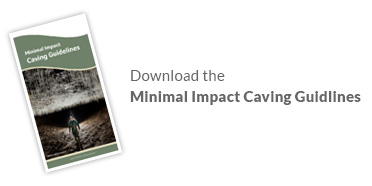Cave Conservation
Caves may contain fragile environments which have taken thousands of years to form.
Some caves are quite robust whilst other are very delicate. Care is needed to avoid lasting damage and all cavers should be guided by the Cave Conservation Code:
- Cave with care and thought for the environment
- Disturb nothing whether living or geological
- Avoid touching formations
- Keep to marked routes and never cross conservation tapes
- Take nothing but photographs
- Do not pollute the cave – leave nothing behind




